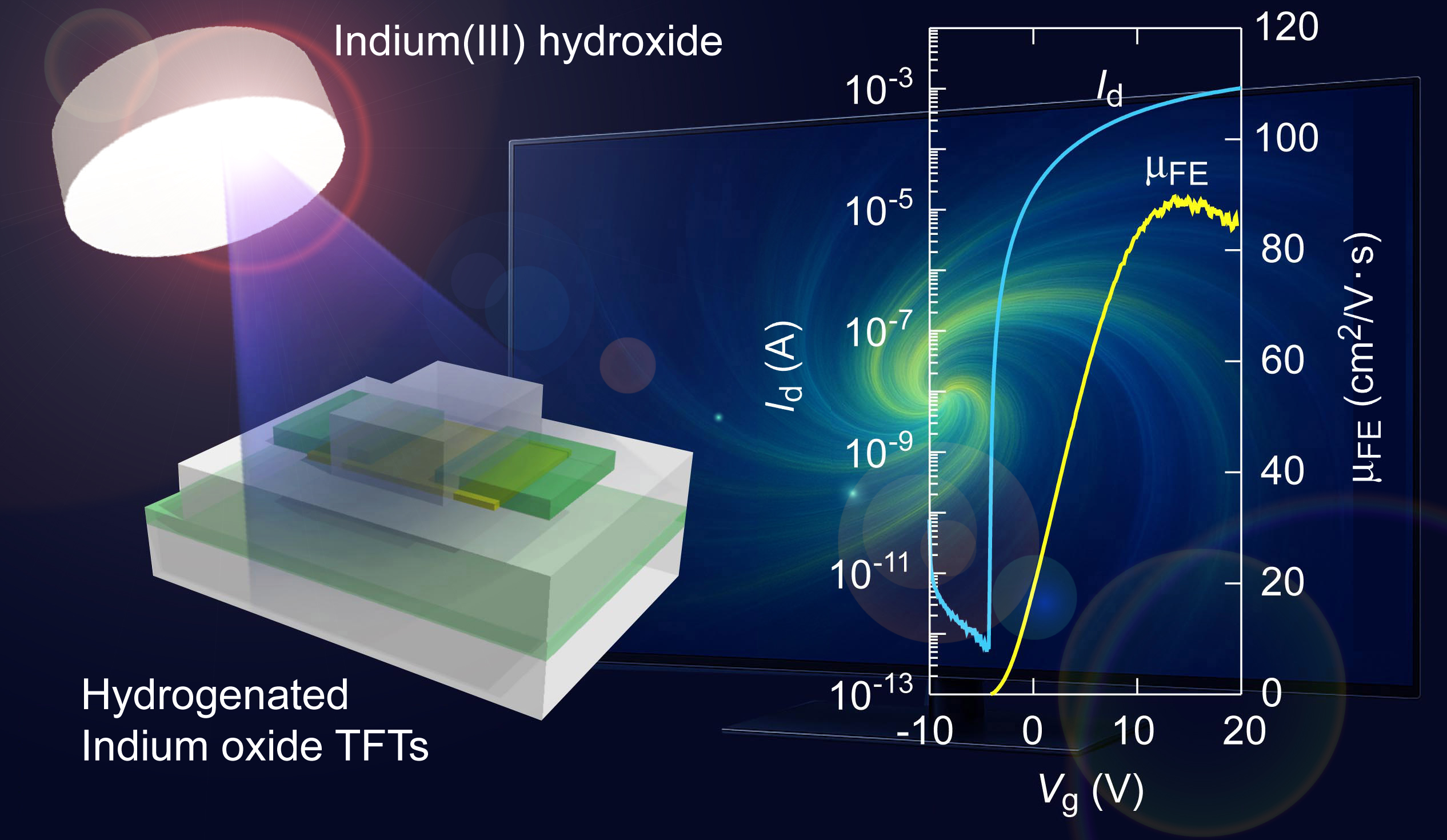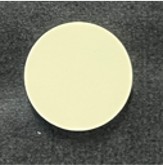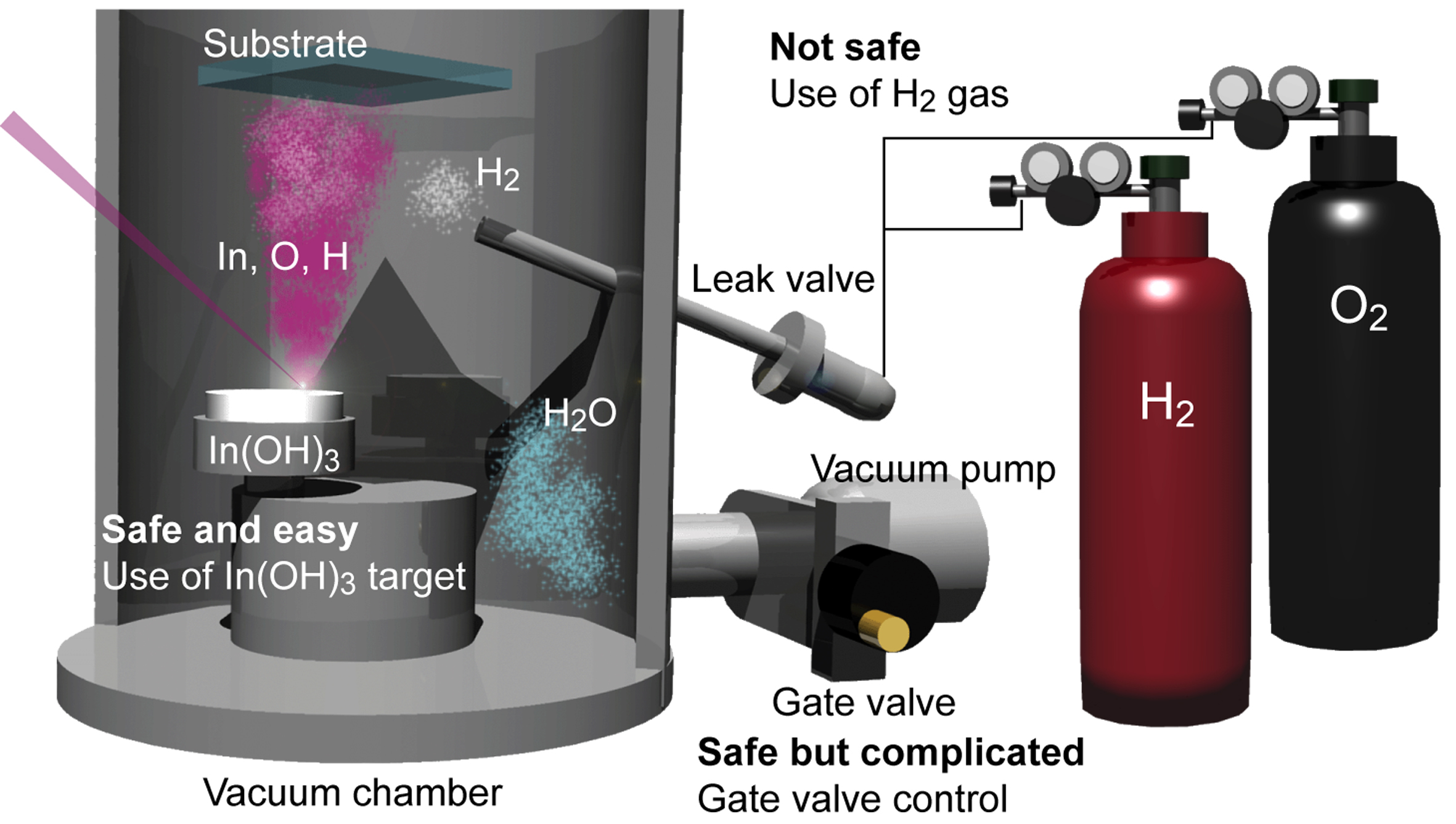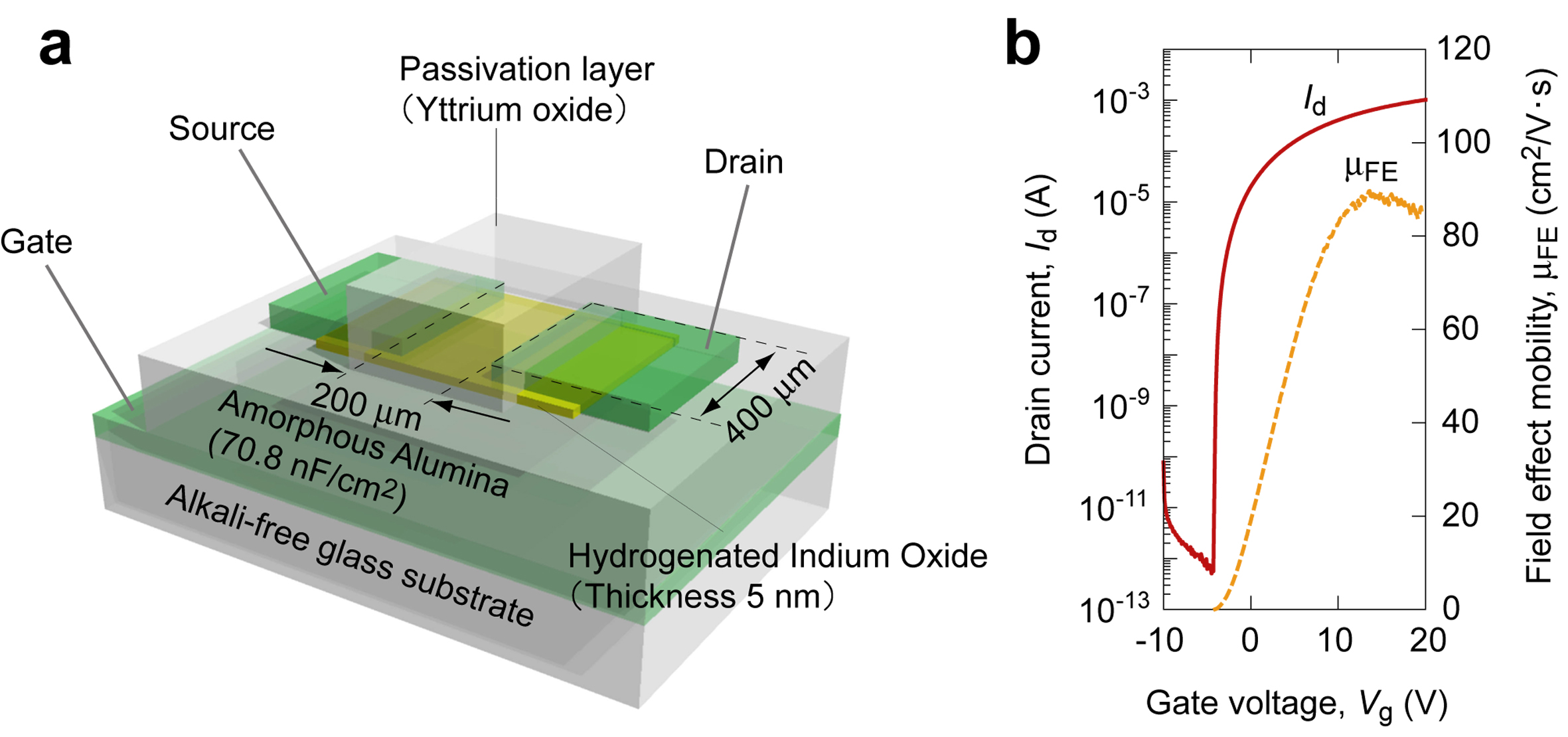
Key Points
- Successfully introduced hydrogen into thin films safely and easily by using indium hydroxide as a raw material.
- Eliminated the need for hazardous hydrogen gas and complex pressure control processes, while achieving performance comparable to conventional methods.
- Achieved a field-effect mobility of approximately 90cm2/V·s, accelerating next-generation display development.
Overview
A research group led by Hikaru Sadahira (Master’s Program, Graduate School of Information Science and Technology, Hokkaido University), Professor Hiromichi Ohta (Research Institute for Electronic Science, Hokkaido University), then-Assistant Professor Yusaku Magari (Research Institute for Electronic Science), and Professor Akira Miura (Faculty of Engineering, Hokkaido University) has successfully developed high-performance thin-film transistors (TFTs) with a field-effect mobility of approximately 90cm2/V·s without using hazardous hydrogen gas or complex pressure control. Hydrogenated indium oxide TFTs have attracted attention as promising devices for next-generation displays, as they exhibit about ten times the field-effect mobility of the currently mainstream indium gallium zinc oxide (IGZO) TFTs. However, since hydrogen can explode when mixed with oxygen, conventional hydrogen gas-based fabrication methods have significant safety concerns. In August 2024, the group demonstrated high-performance TFTs without hydrogen gas, but that method required a complex process of precisely controlling the pressure inside the film deposition chamber. In the present study, the researchers developed a new method to safely and easily introduce hydrogen into the thin film by using indium hydroxide as the source material. This approach enabled the fabrication of high-performance TFTs without complex pressure operations. The achievement is expected to greatly accelerate the development of next-generation display TFTs. This research was published in ACS Applied Electronic Materials on August 3, 2025.
Background
In recent years, hydrogenated indium oxide TFTs have been drawing attention as high-performance devices for next-generation displays. They offer about ten times the field-effect mobility of IGZO-based TFTs currently used in displays. However, hydrogen’s explosiveness when mixed with oxygen has raised safety issues for hydrogen gas-based fabrication. In August 2024, the group developed a hydrogen-free method for making high-performance TFTs (see related press release), but it required a complex and precise pressure control process during thin-film fabrication.
Research Method
In this study, the team used hydrogen-containing “indium hydroxide” as the raw material for indium oxide thin films (Fig. 1). Indium hydroxide powder was compressed into tablet form, then evaporated by ultraviolet laser irradiation in a vacuum chamber and deposited onto a substrate for TFT fabrication (Fig. 2). No complex pressure control, which was previously required, was used.
Research Results
As a result, the team succeeded in fabricating TFTs with performance equivalent to those made using hydrogen gas or complex pressure control methods (Fig. 3). The hydrogen content in the indium oxide films obtained was comparable to films from conventional methods, and the field-effect mobility reached approximately 90cm2/V·s.
Future Prospects
This work significantly contributes to establishing a safe and simple fabrication method for next-generation display TFTs and is already patent-pending (“Ceramic Target for Forming Hydrogenated Indium Oxide Film, Method for Manufacturing the Same, and Method for Manufacturing Thin-Film Transistors Using the Ceramic Target,” Japanese Patent Application No. 2024-150613, filed September 2, 2024). The researchers will continue to improve device performance and explore mass-production processes.
Acknowledgments
This research was supported by JSPS KAKENHI JP22K14303 and JP22H00253, the MEXT Advanced Research Infrastructure for Materials (JPMXP1223HK0082), and JST SPRING (JPMJSP2119).
Related Press Release
Hokkaido University and Kochi University of Technology Joint Press Release:“Oxide Thin-Film Transistor with Ten Times the Performance of Conventional Devices – An Essential Device for the Development of Next-Generation Ultra-Large OLED TVs”
Date of Issue: August 7, 2024 (Wednesday)
URL: https://www.hokudai.ac.jp/news/2024/08/10-14.html
Publication Information
- Title
- Indium Hydroxide Ceramic Targets: A Breakthrough in High-Mobility Thin-Film Transistor Technology
- Authors
-
Hikaru Sadahira1, Prashant Gedia2, Hyeonjun Kong1, Akira Miura3, Yasutaka Matsuo2, Hiromichi Ohta2, Yusaku Magari2 (at the time of research)
(1Graduate School of Information Science and Technology, Hokkaido University; 1Research Institute for Electronic Science, Hokkaido University; 3Faculty of Engineering, Hokkaido University) - Journal
- ACS Applied Electronic Materials (American Chemical Society, Materials Science)
- DOI
- 10.1021/acsaelm.5c00829
- Publication Date
- August 3, 2025 (Online)
Contact
-
Professor Hiromichi Ohta
Research Institute for Electronic Science, Hokkaido University - Tel/Fax: +81-11-706-9428
- E-mail: hiromichi.ohta[at]es.hokudai.ac.jp
- URL: https://functfilm.es.hokudai.ac.jp/english/
Figures













